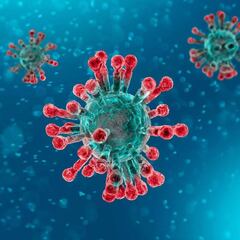What is the incubation period for Omicron BA.2 and how many days are you contagious with this variant?
The sub-variant of Omicron is fast becoming the dominant strain of the virus and Europe is already seeing a spike in infections. Should the US be worried?

With the news rightly dominated by events in Ukraine, information about covid-19 has taken a back seat. This is also due to the lull in cases after the January spike which saw the highest number of cases so far in the pandemic. Since then, cases have been decreasing, hence the lack of covid-19 attention.
But in Europe there has been a new rise in cases. The UK had its worst week of infections last week with 1 in every 16 people contracting the virus. Omicron BA.2, an offshoot of the Omicron variant, is the culprit. It is estimated to be more infectious than its cousin and this effect is exacerbated by the lifting of restrictions in much of Europe.
I cry for England 🏴—#BA2 hospitalizations have now exceeded old #Omicron’s peak—which were **merely 3 months ago**. So much for stupid mass infection natural herd strategy.
— Eric Feigl-Ding (@DrEricDing) April 5, 2022
This is @borisjohnson & @sajidjavid’s horrible British 🇬🇧 exceptionalism.
HT @Antonio_Caramia #COVID19 pic.twitter.com/yP7v0rOmyM
What keeps infections high is the amount of time that people can be contagious with the variant, coupled with the relaxing of rules which give opportunities for infected people to spread the virus.
What is the incubation period of Omicron BA.2?
For most patients, symptoms appear to last three to five days, said Dr. Rahul Sharma, the emergency physician-in-chief at the NewYork-Presbyterian/Weill Cornell Medical Center.
“A lot of these patients are not having the symptoms for the 10 to 12 days that I saw when there were no vaccinations,” he told NBC News.
The CDC recommends people should quarantine for five days if they have been in contact with someone with the virus, but only if their vaccine is older than six months or they are unvaccinated.
Use of a mask is recommended after being in contact with someone or in the five days after recovery. The organisation says to stay at home if you still have symptoms, although this is a difficult choice for many Americans who are unlikely to qualify for extra days of sickness pay and may have to go to work regardless of their health.
What are the dangers of Omicron BA.2?
Like the other variants of covid-19, the ultimate risk is death. Compared to the earlier variants this risk is lowered, partly due to the increased protection offered by vaccines and natural immunity.
The sub-variant has shown it can evade previous vaccinations, especially if the person has only been double-jabbed, but this can be overcome with the booster vaccines that are currently available in the US.
However, the sub-variant can be detected by PCR tests, so the supposed naming of it as the ‘stealth variant’ is an apparent misnomer.
Related stories:
How many people are infected with Omicron BA.2 in the US?
Related stories
From highs at the end of January, the number of US covid-19 cases remains relatively low. Data from the US Centers for Disease Control and Prevention (CDC) shows the seven-day moving average of covid-19 cases was 26,106 as of April 1, ever so slightly lower than 26,309 from a week earlier.
Today is the lowest number of US Covid hospitalizations since the pandemic started👋
— Eric Topol (@EricTopol) March 29, 2022
A reason to celebrate, even if it's brief.https://t.co/xStmHRzwg2 pic.twitter.com/wZpWkegdeD
The number of infections is expected to leap in the coming weeks once the infectious BA.2 sub-variant begins to take effect. As of April 2, BA.2 made up 72.2 percent of variants in the US, up from 57.3 percent the week prior. According to the World Health Organisation (WHO), 86 percent of all covid-19 cases globally are made up by the sub-variant. Clearly, it is to be the new dominant strain, and with the lack of measures to tackle the variant

